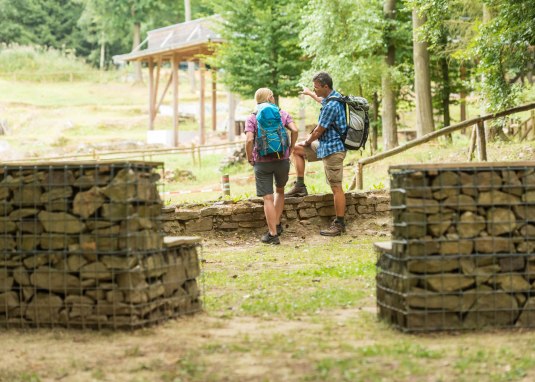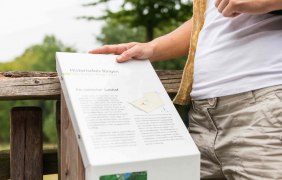The Villa Rustica is idyllically located in the middle of the Bingen Forest. Exposed walls and various stone fills can be admired in the open area. Roman kitchen gardens, Roman games and information boards provide insights into everyday life at the time and into archaeological work. The living excavation site reveals new aspects for explorers of all ages all year round.
The foundations of the approximately 3.5-hectare estate are largely preserved, along with the more than 850-metre-long courtyard wall. The medium-sized Roman farm consisted of a manor house and at least seven stone outbuildings and was situated in the middle of its agricultural land. The manor house itself was built around 150 AD in the typical regional style of the porticus villa with corner risalites and was inhabited until around 420 AD. The individual farmsteads called villa rustica were distributed in large numbers in the open settlement landscape of the time. Villages were rare. 70 percent of the Roman population lived on such farms.

searchMenu


